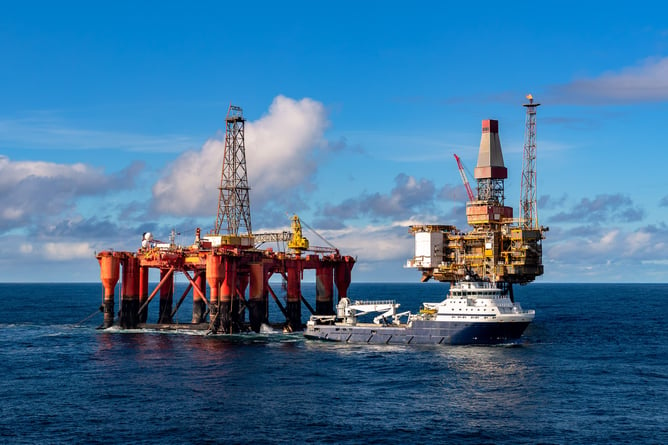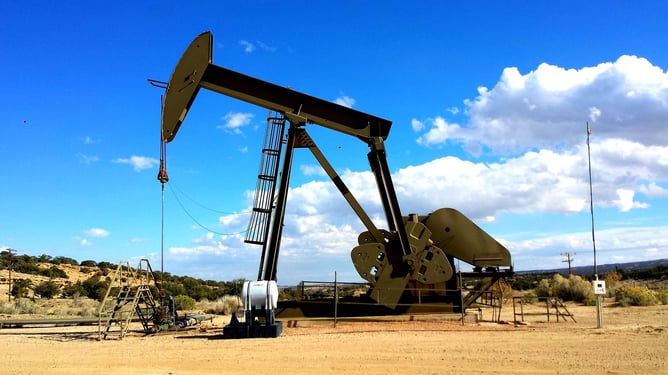In this week’s blog post we are going to explore the different types of rigs that can be used in the oil and gas industry. There are two main categories, on-shore (land) and off-shore (marine) based rigs and depending on your operations, you will require a different setup. Let’s get into the types of rigs and learn which type is used for the process of collecting crude oil and natural gas based on location.
Offshore Rigs
There are many different offshore rigs with some being secured to the ocean floor (fixed structure), while others are floating platforms/vessels. Typically, offshore drilling takes place in remote locations over the water. Operators drill below the Earth’s seabed using steel pipes and tools that create a drill string and can reach up to 12,000 feet deep.

Barge Rigs
They tend to work in shallower waters, typically less than 20 feet. They are floated out to the drilling location and the hull can rest on the ocean floor to create a stable platform for drilling.
Submersible Rigs
Is a marine vessel designed to be floated to a location and lowered onto the sea floor for offshore drilling activities. They are used in waters too deep for barges but less than 50-70 feet deep. Drilling equipment on the platform above, drives a floating drill unit below.
Jack-Up Rigs
When working in deeper waters, a mobile platform is used. Jack- up rigs are named after its ability to be moved directly over the location to drill or pump oil. The rig can be self-elevated (jacked up) from the bottom of the ocean. These rigs are best suited for operations taking place in shallow waters of 400 feet or less.
Platform Rigs
The most common type of rig are anchored platforms, built with steel. They are designed to be anchored to the ocean floor for a surface drilling rig, equipment and living quarters. It is a large structure and used to extract oil and process petroleum and natural gas from rock formations beneath the seabed, the platforms can drill from various directions from this base.
Floating Rigs or Floaters
In deep waters it is not practical to attach an offshore rig to the bottom of the ocean. These rigs do not keep in contact with the seabed unless they are in drilling mode. Floating rigs and semi-submersible rigs and are kept in place with heavy anchors or through a dynamic positioning system. These systems can operate on water depth of up to 6,000 feet.
Semisubmersibles
Is a specialised marine vessel that is used in offshore drilling rigs, safety vessels, oil production platforms and heavy lift cranes. They have good ship stability and seakeeping, considered to have better performance than Drill Ships. They can be towed into a position by a tugboat and anchored or moved by and kept in position by their own thrusters.
Drillships
A drillship is a mobile offshore drilling rig where a non-full ship, catamaran, triple-hull ship, or barge is adapted or built for use as a platform. The drilling equipment on a drillship is mounted on the centre of the ship over a moon pool (a reinforced hole in the bottom of the ship) where the drill string is raised and lowered. It can operate in water too deep for anchors too.
Floating Production Storage and Offloading (FPSO)
This unit is a floating vessel used for the production and processing of hydrocarbons and to store oil. The vessel is designed to receive hydrocarbons produced by itself or from nearby platforms. As they are easy to install and do not require a local pipeline infrastructure, they are preferred on frontier offshore regions.
Onshore Rigs
Onshore drilling takes place on land and not over water. Land drilling rigs are designed to be moved easily and operating at a maximum depth. Rigs are moved via ground transportation and multiple wells are drilled at the same site near each other by moving the rig. Being on land naturally these operations are more accessible for crews. The type of drill rig that is chosen depends on specific requirements and geological conditions; they are categorised into the following:

Conventional Drilling Rigs
These are made up of Rotary Drilling Rigs, Cable Drilling Rigs and Auger Drilling Rigs. The rigs form the foundation of onshore drilling operations.
- Rotary Drilling Rigs
Are versatile and operate with a rotating drill bit to break through the Earth’s surface and extract oil or gas.
- Cable Drilling Rigs
Have a unique mechanism where a cable extracts samples or drills holes, typically used in shallow drilling such as environmental surveys. Offering flexibility, it is suitable for challenging areas of terrain.
- Auger Drilling Rigs
Are designed to drill through unconsolidated materials such as soil and sand. With a helical screw-shaped drill to help extract the materials. They tend to be used for environmental sampling and geotechnical investigations.
Directional Drilling Rigs
Are fundamental when targets cannot be accessed with vertical drilling. These rigs allow drilling to take place at various angles, to ensure for a successful extraction. Within the ‘directional drilling rig’ there are rotary drilling rigs, horizontal drilling rigs and multilateral drilling rigs.
Hydraulic Fracturing Drilling Rigs
They are engineered for the extraction of hydrocarbons and these rigs have hydraulic fracturing techniques, where water, sand and chemicals are injected into the well, to break the rock and extract the oil or gas. This process has revolutionised the energy industry and made it possible to extract resources that were previously inaccessible.
Coiled Tubing Drilling Rigs
These rigs have a flexible coiled tubing string instead of traditional jointed pipe. The coiled tubing is placed inside the wellbore, allowing for drilling operations. They offer faster rig-up and rig-down times and improved well control, as well as performance in live wells. They are employed for drilling and workover operations in both on-shore and off-shore operations. Providing increased efficiency and cost-effectiveness.
At Storm we can meet all your operational needs and supply you with premium quality products, that keep you performing under pressure. Click the link below to download our energy brochure.
We hope you enjoyed this week’s blog post and found it insightful. Make sure you are subscribed to our newsletter, so you never miss out when we upload a new blog. Feel free to leave your thoughts in the comment section below and perhaps suggest a topic you’d like to read about next time!


